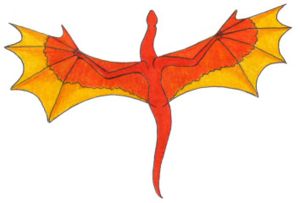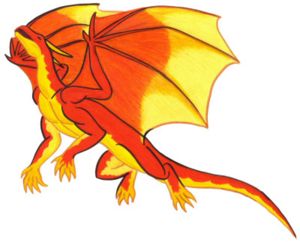Difference between revisions of "Bright Copper"
Wombat1138 (talk | contribs) |
m |
||
| Line 8: | Line 8: | ||
The Bright Copper is notable for its disproportionately large air sacs--a trait that was successfully bred into the much larger [[Regal Copper]] and has allowed the latter to fly efficiently despite its weight. | The Bright Copper is notable for its disproportionately large air sacs--a trait that was successfully bred into the much larger [[Regal Copper]] and has allowed the latter to fly efficiently despite its weight. | ||
| − | == | + | ==Origin Of Name?== |
"Bright Copper" is also the common name of the Australian butterfly ''Paralucia aurifer'', first described in 1848. Each wing has an upper pattern of a bright orange triangular center surrounded by wide dark brown margins; the undersides are duller brown with irregular black speckles. | "Bright Copper" is also the common name of the Australian butterfly ''Paralucia aurifer'', first described in 1848. Each wing has an upper pattern of a bright orange triangular center surrounded by wide dark brown margins; the undersides are duller brown with irregular black speckles. | ||
Revision as of 04:20, 11 September 2010
Dragon Breed Data
| Breed Name: | Bright Copper |
| National Loyalty: | British |
| Physical Characteristics: | |
| Special Abilities: | Disproportionately large air sac |
| Known Members: |
Species Notes
According to Sir Edward Howe, this breed was crossed with the Spanish Cauchador Real to create the Regal Copper. The cross was suggested by Roger Bacon.
The Bright Copper is notable for its disproportionately large air sacs--a trait that was successfully bred into the much larger Regal Copper and has allowed the latter to fly efficiently despite its weight.
Origin Of Name?
"Bright Copper" is also the common name of the Australian butterfly Paralucia aurifer, first described in 1848. Each wing has an upper pattern of a bright orange triangular center surrounded by wide dark brown margins; the undersides are duller brown with irregular black speckles.
It is possible that in Temeraire's world, the butterfly was named for a resemblance to the British dragon.

